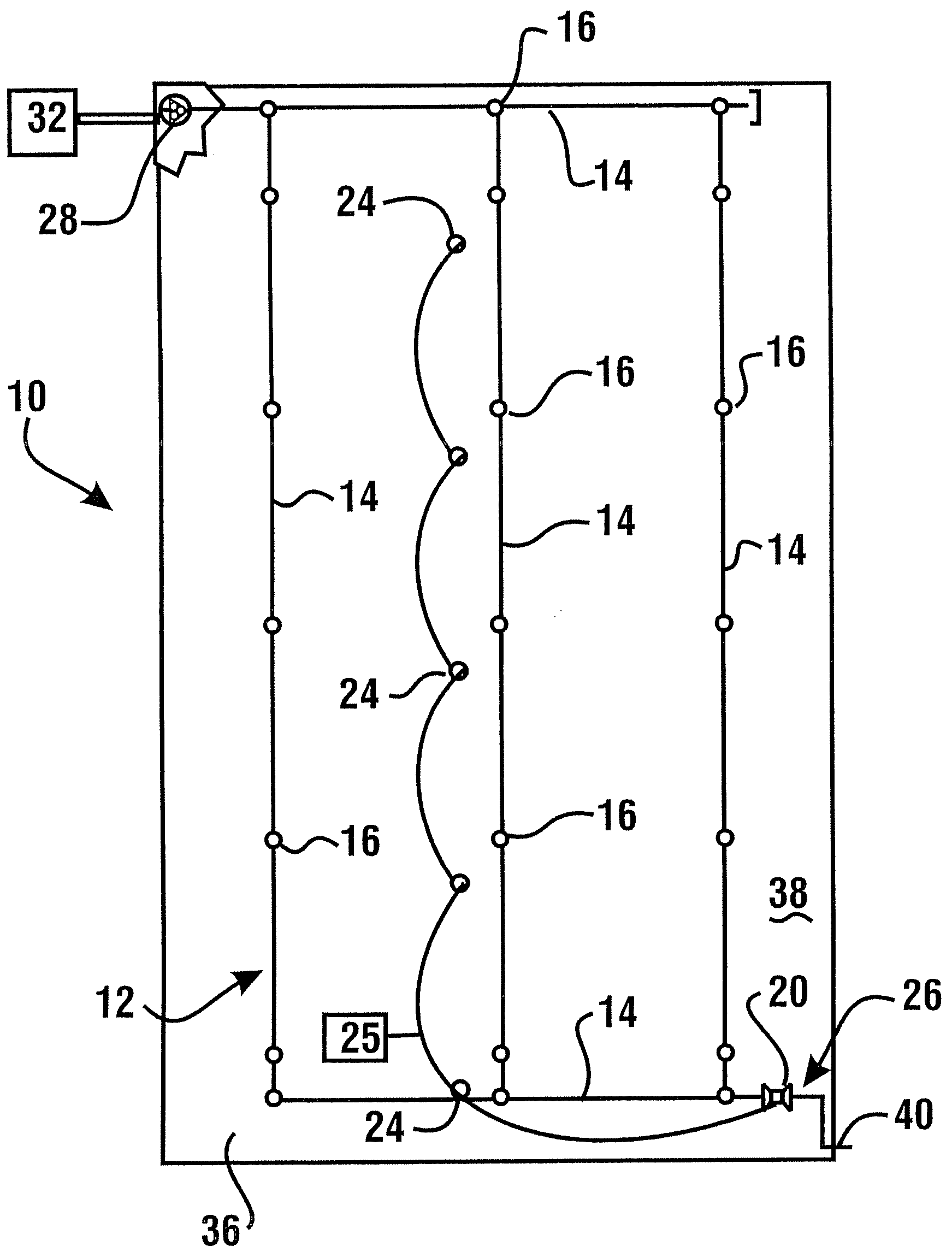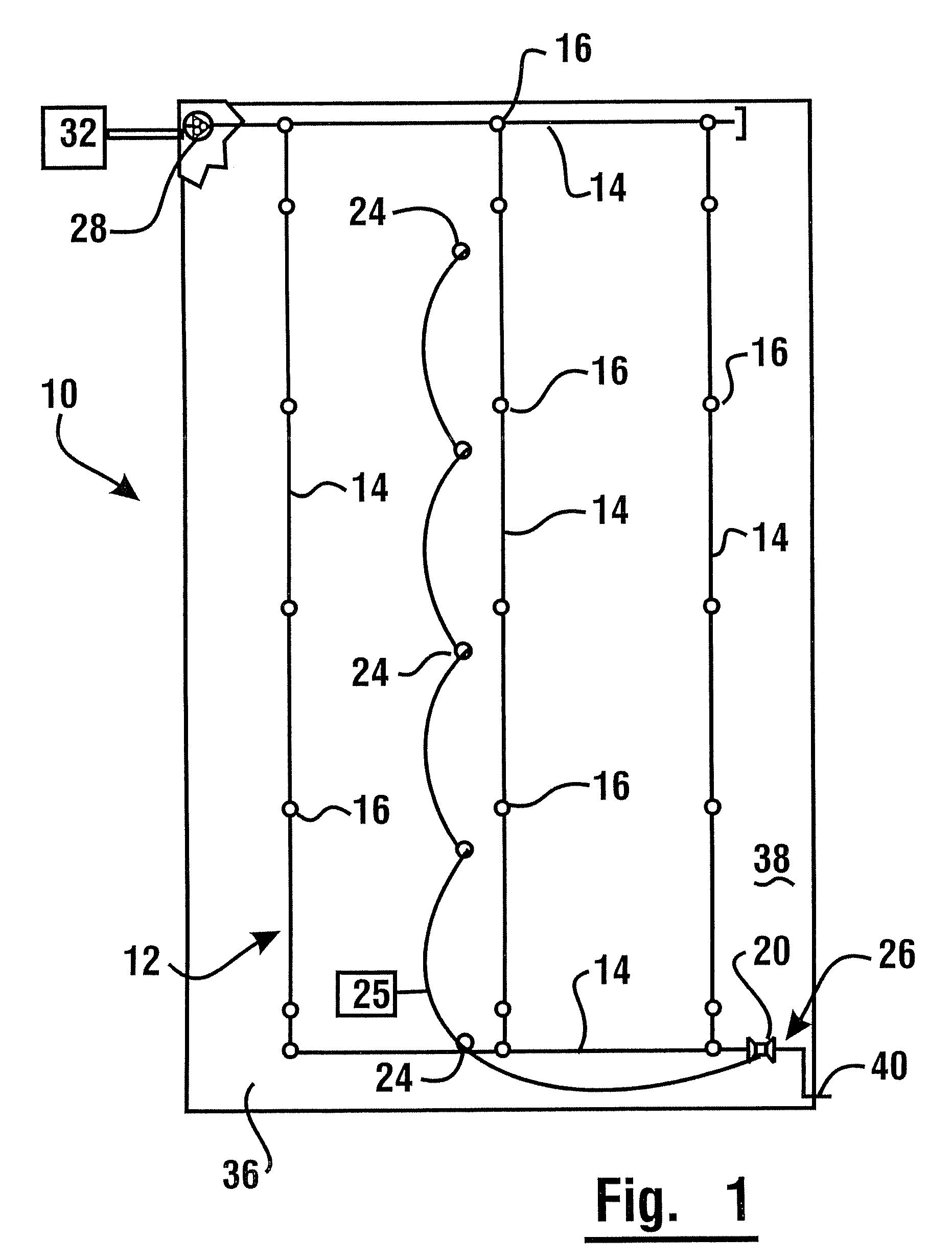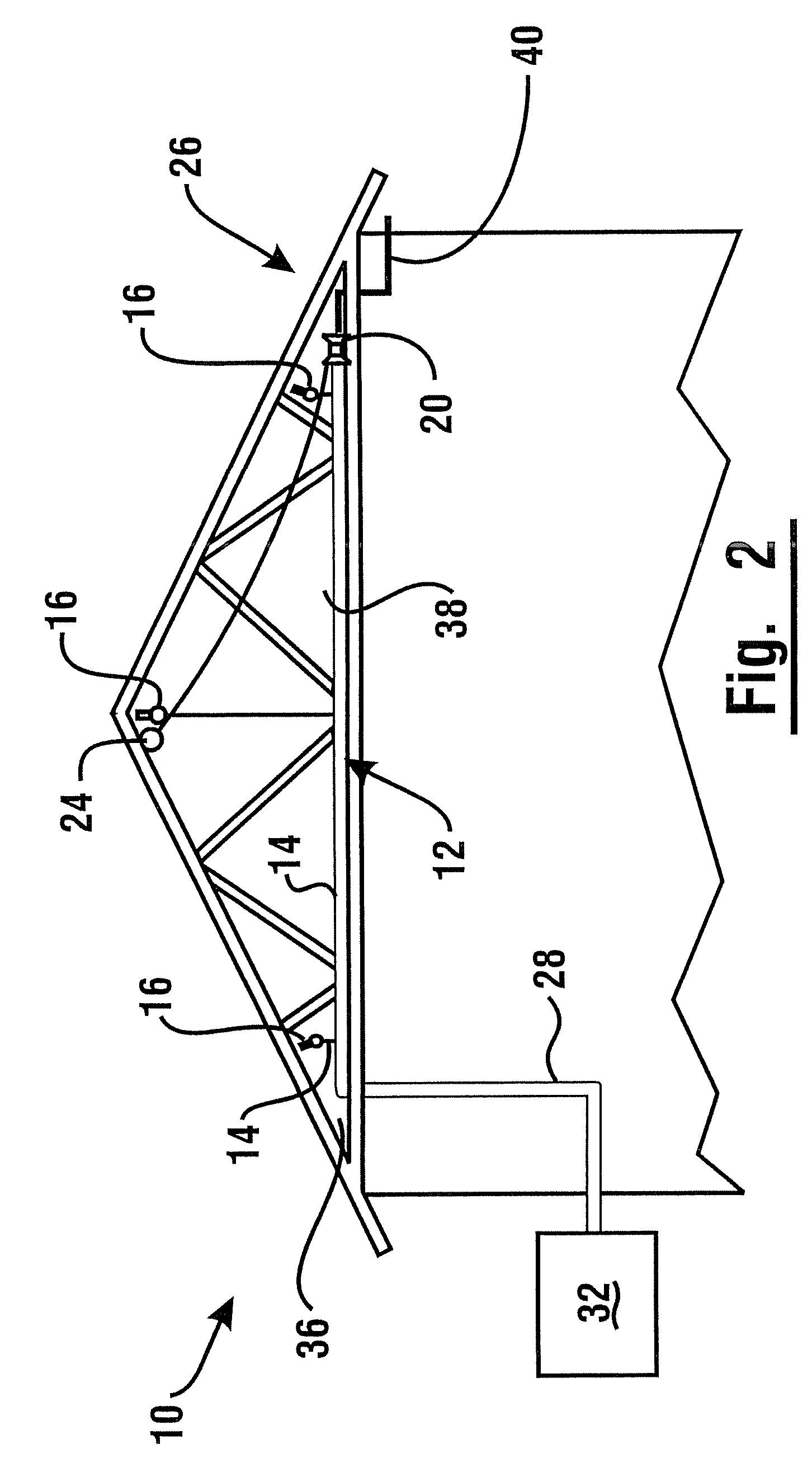Fire suppression system
a fire suppression system and sprinkler technology, applied in fire rescue, medical science, dental surgery, etc., can solve the problems of unfinished residential basements, thermoplastic sprinkler piping near the initial fire location, and the possibility of structural failure of fire suppression systems, so as to achieve more cost-effective effects
- Summary
- Abstract
- Description
- Claims
- Application Information
AI Technical Summary
Benefits of technology
Problems solved by technology
Method used
Image
Examples
Embodiment Construction
[0023]The foregoing summary, as well as the following detailed description of exemplary embodiments, will be better understood when read in conjunction with the appended drawings. For the purpose of illustrating the exemplary embodiments, there is shown in the drawings certain exemplary systems. It should be understood, however, that these embodiments are merely exemplary and that the present invention is not limited to the systems, arrangements and instrumentalities shown or described herein.
[0024]With respect to the Figures, in an exemplary embodiment, a fire suppression system 10 includes a sprinkler line 12 comprising a network of fluid conduits 14 which are formed of a thermoplastic material. In the exemplary embodiment, the fluid conduits are comprised of chlorinated polyvinyl chloride (CPVC). The fluid conduits (which are alternatively referred to herein as pipes) 14 are in flow communication with a plurality of fire sprinklers 16. The exemplary type of CPVC resin of which th...
PUM
 Login to View More
Login to View More Abstract
Description
Claims
Application Information
 Login to View More
Login to View More - R&D
- Intellectual Property
- Life Sciences
- Materials
- Tech Scout
- Unparalleled Data Quality
- Higher Quality Content
- 60% Fewer Hallucinations
Browse by: Latest US Patents, China's latest patents, Technical Efficacy Thesaurus, Application Domain, Technology Topic, Popular Technical Reports.
© 2025 PatSnap. All rights reserved.Legal|Privacy policy|Modern Slavery Act Transparency Statement|Sitemap|About US| Contact US: help@patsnap.com



